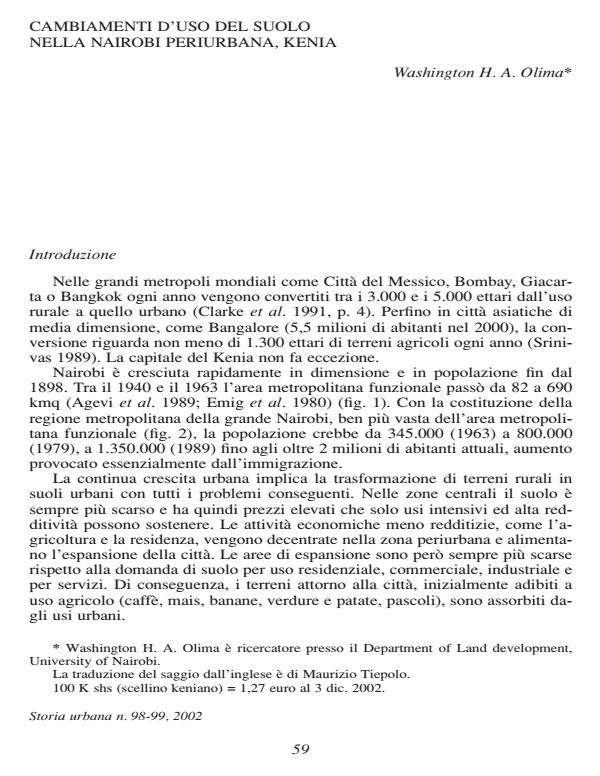Cambiamenti d'uso del suolo nella Nairobi periurbana Kenia
Journal title STORIA URBANA
Author/s Washington H.A. Olima
Publishing Year 2003 Issue 2002/98-99
Language Italian Pages 12 P. File size 88 KB
DOI
DOI is like a bar code for intellectual property: to have more infomation
click here
Below, you can see the article first page
If you want to buy this article in PDF format, you can do it, following the instructions to buy download credits

FrancoAngeli is member of Publishers International Linking Association, Inc (PILA), a not-for-profit association which run the CrossRef service enabling links to and from online scholarly content.
The rate of urban growth is the single most important phenomenon transforming the pattern of human settlements. The unprecedented transformation is most pronounced in the land use changes in the peri-urban interface of the urban centers in Kenya. The peri-urban fringe is the transition zone between well-organized and recognized urban land uses, and areas devoted to agriculture. The problems witnessed in the peri-urban fringe stem from rapid urbanization and sagging urban economic productivity. Taking the capital city of Kenya, Nairobi, as a case study, this paper examines the land use changes in peri-urban Nairobi, with particular emphasis on the historical roots of land conversion changes. In addition, the paper examines the main changes within the peri-urban fringe over time in terms of physical issues, land use, tenure, housing development, and employment status. This is all the more important in view of the fact that arable land is limited and urban development of prime farmland threatens self-sufficiency in food production. The question of these locations, which are peripheral to large cities and land quality, are both considered. The paper ends by discussing the consequences of the transformation, and proposes the way ahead in the effective management of land markets in order to achieve social, economic, and environmental objectives of urbanization.
Washington H.A. Olima, Cambiamenti d'uso del suolo nella Nairobi periurbana Kenia in "STORIA URBANA " 98-99/2002, pp , DOI: